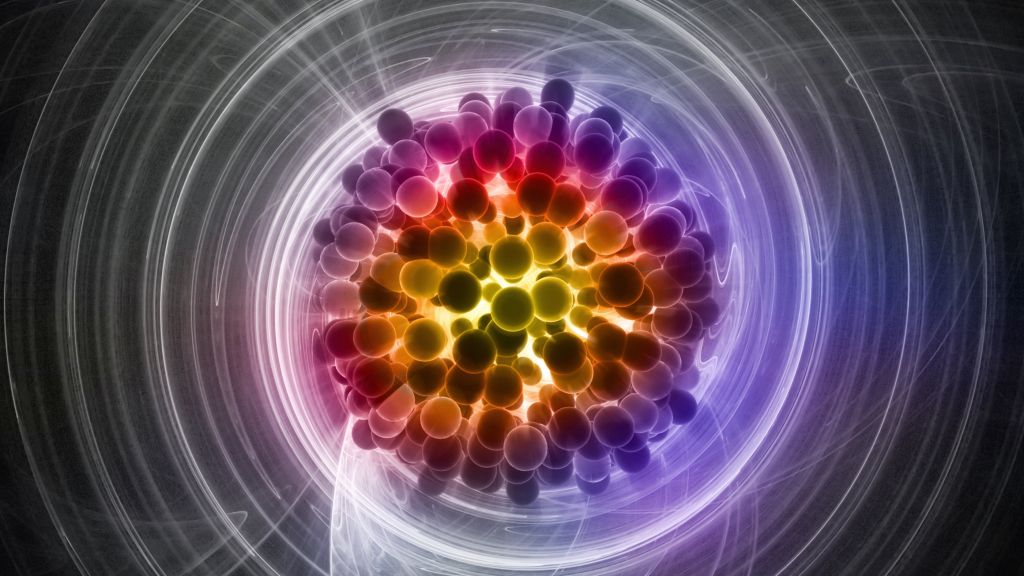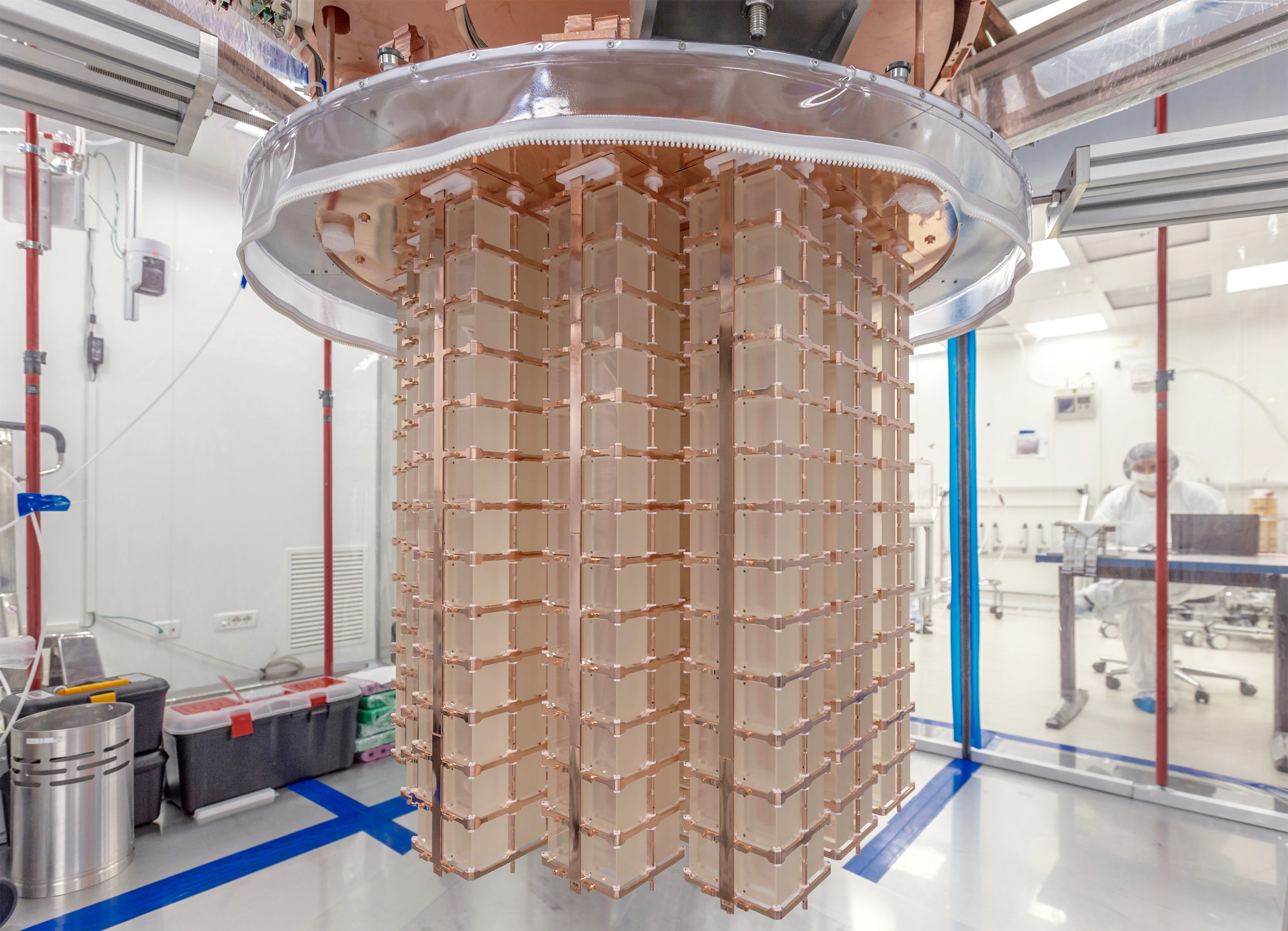Identity-Switching Neutrinos Could Reveal Why We Exist At All. But Can We Find Them?

For years now, an international team of researchers has hidden themselves deep beneath a mountain in central Italy, tirelessly collecting the most sensitive measurements from the coldest cubic meter in the known universe. The scientists are searching for evidence that ghostly particles called neutrinos are indistinguishable from their own antimatter counterparts. If proved, the discovery could resolve a cosmic conundrum that has plagued physicists for decades: Why does matter exist at all?
They've long known that matter has an evil twin dubbed antimatter. For every fundamental particle in the universe, there exists an antiparticle that's nearly identical to its sibling, with the same mass but opposite charge. When a particle and antiparticle meet face-to-face, they annihilate each other, creating pure energy.
"We have this apparent complete symmetry of accounting between matter and antimatter," Thomas O'Donnell, a professor of physics at Virginia Tech University, told Live Science. "Every time you make a piece of matter, you also make a balancing piece of antimatter, and every time you destroy a piece of matter, you must destroy a piece of antimatter. If this is true, you can never have more of one type than the other."
Related: Big Bang to now: Snapshots of our universe through time
This symmetry is at odds with our current understanding of how the universe began. According to the Big Bang Theory, when the universe expanded from an infinitesimal singularity some 13.8 billion years ago, it is believed that equal amounts of matter and antimatter came into existence. However, when astronomers look out into the cosmos today, the universe is composed almost entirely of matter with none of its evil twin in sight. More troubling, if the Big Bang Theory is correct, then we — yes, humans — shouldn't be here today.
"If matter and antimatter fully obey this symmetry, then as the cosmos evolved, all the matter and antimatter would have annihilated into photons and there would be no matter left for stars, planets or even human cells. We would not exist!" O'Donnell said. "The big question then is: 'Did this accounting scheme break sometime during the evolution of the universe?'"
That question is what O'Donnell and fellow collaborators hope to answer. Over the past two years, their team has collected and analyzed data from the CUORE (Cryogenic Underground Observatory for Rare Events) experiment at the Gran Sasso National Laboratory in Italy, looking for the smoking gun that would put this cosmic mystery to rest.
Breaking space news, the latest updates on rocket launches, skywatching events and more!
The little neutral ones

CUORE, which means "heart" in italian, is searching for evidence that elusive subatomic particles called neutrinos are their own antiparticle, what physicists call a Majorana particle. Neutrinos, which pass like specters through most matter, are extremely hard to detect. In fact, according to NASA, trillions of neutrinos originating from the fiery nuclear furnace of our sun pass through our bodies every second.
The CUORE experiment looks for the signature of Majorana neutrinos annihilating each other in a process called neutrinoless double-beta decay. In ordinary double-beta decay, two neutrons inside the nucleus of an atom simultaneously morph into two protons, emitting a pair of electrons and antineutrinos. This nuclear event, although exceedingly rare and occurring only once every 100 quintillion years (10^20) for an individual atom, has been observed in real life.
Related: The 18 Biggest Unsolved Mysteries in Physics
However, if the researchers are correct and neutrinos are true Majorana particles (they are their own antiparticle), then the two antineutrinos created during the decay could annihilate each other and create a neutrinoless double-beta decay. The result? Just electrons, which are "ordinary matter." If this process proves true, it may be responsible for seeding the early universe with ordinary matter. Observing this process, however, is another story. Scientists estimate neutrinoless double-beta decay (if it exists at all), may take place just once in every 10 septillion years (10^25).
"The neutrinoless mode is the one we really want to see, it would break the rules, creating matter without antimatter," said O'Donnell, who is a member of the CUORE collaboration. "It would be the first clue to a real solution of the matter-antimatter asymmetry."
The CUORE detector looks for the energy signature, in the form of heat, from the electrons created during the radioactive decay of tellurium atoms. Neutrinoless double-beta decay would leave a unique and distinguishable peak in the energy spectrum of the electrons.
"CUORE is, in essence, one of the world's most sensitive thermometers," Carlo Bucci, a technical coordinator for the CUORE collaboration, said in a statement.
Assembled over a decade, the CUORE instrument is the coldest cubic meter in the known universe. It consists of 988 cube-shaped crystals made of tellurium dioxide, cooled to 10 milli-kelvin, or minus 460 degrees Fahrenheit (minus 273 degrees Celsius), just a hair above the coldest temperature physics will allow. To shield the experiment from interference by outside particles such as cosmic rays, the detector is encased in a thick layer of highly pure lead recovered from a 2,000-year-old Roman shipwreck.
Despite the team's technological achievements, finding the neutrinoless event has proved to be no easy task. The researchers have more than quadrupled the collected data since their initial results in 2017, representing the largest dataset ever collected by a particle detector of its kind. Their latest results, published on the preprint database arXiv, show they found no evidence of neutrinoless double-beta decay.
The collaboration is still determined to hunt down this elusive double-agent particle. Their results have put a tighter bound on the expected mass of a Majorana neutrino, which they believe is at least 5 million times lighter than an electron. The team has plans to upgrade CUORE after its initial five-year run, introducing a new type of crystal that they hope will vastly improve its sensitivity.
"If history is a good predictor of the future, then we can be fairly certain that pushing the envelope of detector technologies will allow us to scrutinize neutrinos with ever-growing depth," O'Donnell said. "Hopefully, we will discover neutrinoless double-beta decay, or perhaps something more exotic and unexpected."
- 11 Fascinating Facts About Our Milky Way Galaxy
- Big Bang to Civilization: 10 Amazing Origin Events
- Spaced Out! 101 Astronomy Photos That Will Blow Your Mind
Originally published on Live Science.

Tim Childers was a freelance science journalist with a background in physics and science communication. He studied Physics at the University of Colorado Boulder, with his research focused on modeling the dynamics of the accretion disks surrounding black holes. He then went on to do an internship at the NASA Goddard Space Flight Center using his film talents to create videos, news stories, and interviews. Nowadays, Tim is an exceptionally curious data scientist who loves using data to tell stories to a diverse audience.

